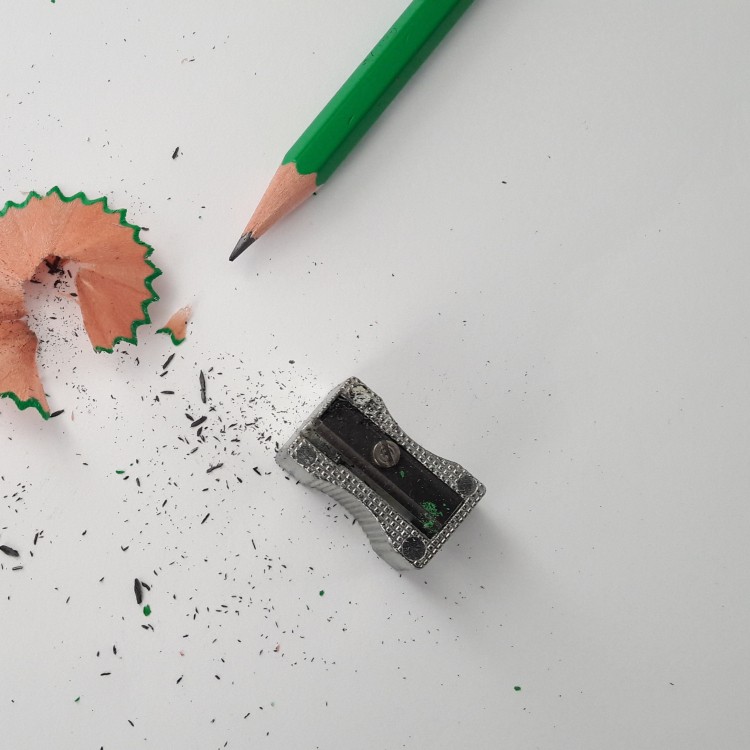

Plausibility and reliance on a purported technical effect demonstrated only in post-filed evidence | G2/21
The admission into the proceedings of the post-published evidence showing this effect was decisive and considered crucial by the Technical Board of Appeal (BoA) in T116/18 for deciding on the presence of IS.
The referring BoA identified three diverging lines of case law for allowing admission of post-published evidence, which were linked to the concept “plausibility” raised by different Boards, either under Art. 56 EPC (as in the case underlying the referral) or under Art. 83 EPC. Those lines were dubbed by the BoA as “ab initio plausibility”, “ab initio implausibility”, and “no plausibility”. The BoA referred the following 3 questions to the EBoA:
- Should an exception to the principle of free evaluation of evidence be accepted in that post-published evidence must be disregarded on the ground that the proof of the effect rests exclusively on the post-published evidence?
If yes, i.e. in the event the EBoA would decide that the post-published evidence had to be disregarded because the proof of a technical effect in support of IS had rested exclusively on the post-published evidence, two further questions were formulated to determine the plausibility standard to take into consideration for the initially disregarded evidence: - “ab initio plausibility”; or
- “ab initio implausibility”?
In their preliminary opinion, during oral hearing, and as confirmed in the present decision, the EBoA answered the first question “no”. The EBoA firmly confirmed that the principle of free evaluation of evidence is a universally applicable principle under the EPC. The EBoA, hence, ordered that (I) evidence submitted to prove a technical effect relied upon for demonstration of the presence of IS, cannot be disregarded solely on the ground that the evidence is post-filed.
By answering “no” to the first question, the EBoA in principle could have disregarded questions (2) and (3). The EBoA decided to provide clarification on the concept of plausibility for IS evaluation under Art.56 EPC, relevant for the case underlying the referral. In the context of Art. 83 EPC, the EBoA set out that “the proof of a claimed therapeutic effect has to be provided in the application as filed. A lack in this respect cannot be remedied by post-published evidence”.
For IS assessment, instead of endorsing any of the “plausibility standards”, the EBoA dismissed the term "plausibility" for not amounting to a distinctive legal concept or a specific patent law requirement under the EPC. According the EBoA, the relevant standard for reliance on the purported technical effect for IS assessment was what the skilled person would understand, at the filing date and with common general knowledge in mind, as encompassed by technical teaching of the application as originally filed. Hence, the EBoA further ordered that (II) a technical effect in IS evaluation can be relied upon, if the skilled person, using common general knowledge, would derive said effect as being encompassed by the technical teaching by the same originally disclosed invention.
In essence the EBoA ruled as follows:
- Free evaluation of evidence is a universally applicable principle in assessing any means of evidence under the EPC. Post-filed data submitted to prove a technical effect relied upon for acknowledgement of inventive step, may not be disregarded solely on the ground of being post-filed data;
- Plausibility does not amount to a distinctive legal concept or a specific patent law requirement under the EPC.
- The technical effect relied upon for the assessment of inventive step, even at a later stage, needs to be encompassed by a technical teaching that the skilled person would understand at the filing date from the application as filed and with common general knowledge in mind.
- The relevant standard for the reliance on this technical effect is not any plausibility standard but what the skilled person would understand as encompassed in the technical teaching of the application as originally filed.
Background – opposition, appeal, and referral
The referral to the Enlarged Board of Appeal (EBoA) and the events preceding were previously summarised by us here. Briefly, patent EP2484209 B1 directed to an insecticide composition was opposed. The opposition was rejected, and the opponent (O) appealed the decision. To demonstrate the presence of an inventive step (IS), the proprietor (P) relied on post-published evidence to show a synergistic effect between two insecticides known separately from the prior art. The admission into the proceedings of the post-published evidence showing this effect was decisive and considered crucial by the Technical Board of Appeal (BoA) for deciding on the presence of IS. The BoA considered whether it was plausible that the problem underlying the invention had been solved over the full scope of the claims.
When considering plausibility, the BoA identified three diverging lines of case law tightly linked to allowability of admission of post-published evidence as applied by different Boards, either under Art. 56 EPC (i.e. in the context of technical effects considered under the so called Problem-Solution Approach for assessment of IS, as in the case at hand) or under Art. 83 EPC (in relation to features present in the claim language and hence applicable to be examined under sufficiency requirements, which is typical for therapeutic effects in so called medical use claims).
The BoA classified these 3 diverging lines of case law into 3 different standards, based on how strictly the concept of plausibility was applied for admission of post-filed evidence. These standards were termed:
- “ab initio plausibility”, being the strictest standard typically seen in the context of medical use claims and sufficiency assessment under Art. 83 EPC, e.g. wherein the claimed therapeutic effect has to be plausible already in the text of the application as filed for admitting any post-filed data;
- “ab initio implausibility”, whereby post-published evidence should only be refused if there existed substantiated doubt at the filing date that the purported technical was not present; and
- “no plausibility”, whereby the requirement of plausible disclosure was dismissed.
Based on the above diverging lines, the BoA referred 3 questions to the EBoA to determine under which conditions post-published data could be relied upon to satisfy plausibility of a technical effect (Art. 56 EPC) over the full scope of the claim.
In summary, the BoA asked the EBoA:
If for acknowledgement of IS post-published evidence is used to demonstrate a technical effect:
- should there be an exception to the principle of free evaluation of evidence allowing to disregard the post-published evidence on the ground that the proof of the effect rests exclusively on said evidence?
If yes, what should be the plausibility standard applied for this initially disregarded evidence to be taken into consideration: - “ab initio plausibility”, or
- “ab initio implausibility”?
EBoA proceedings
The referral was followed by multiple interested parties in the last 1.5 years, resulting in 20 amicus curiae briefs being filed. Many of these letters, the written submissions from O and P alike, were touching upon plausibility assessment in relation to sufficiency of disclosure, even though the referred questions explicitly related only to the applicable plausibility standard in the context of IS.
In October 2022, the EBoA issued their non-binding preliminary opinion, and on 24 November 2022, oral proceedings were held with O and P with a live stream for the public. In both instances, the EBoA mentioned that they would not consider plausibility in the context of Art. 83 EPC in their decision. Furthermore, and possibly unexpectedly to many, the EBoA also signalised then that they intended to answer the first question as “no”, thus obviating the need to provide answers to questions (2) and (3). In the EBoAs initially expressed opinions, the answer to the first question was negative; they have decided that the principle of the free evaluation of evidence is a universal principle, and no evidence is to be disregarded per se, even if produced after the filing date.
Despite answering “no” to the first question and their preliminary indication on Art. 83 EPC, the EBoA continued the oral proceedings with a discussion of the concept of plausibility. The EBoA agreed that the practical approach to the concept of plausibility diverged between the Boards and required guidance.
Decision of the EBoA
On 23 March 2023 the decision was published confirming that the answer to the first referred question is “no”. The EBoA stated:
“The principle of free evaluation of evidence may not be used to disregard evidence per se insofar as it is admissibly submitted and relied upon by a party in support of an inference which is challenged and is decisive for the final decision. Disregarding it as a matter of principle would deprive the party submitting and relying on such evidence of a basic legal procedural right generally recognised in the EPC Contracting States and enshrined in Articles 113(1) and 117(1) EPC”.
After considering the existing jurisprudence of EPO Boards and of selected EPC contracting states with a civil law system, the BoA concluded that the principle of free evaluation of evidence qualifies as a universally applicable principle under the EPC for assessing any means of evidence by the Boards. The EBoA, hence, ordered that (I) evidence submitted to prove a technical effect relied upon for demonstration of the presence of inventive step, cannot be disregarded solely on the ground that the evidence is post-filed evidence.
The EBoA further provides clarification on the concept of plausibility in the context of not only IS evaluation, which was relevant for the case underlying the referral, but also and in line with the advocating submissions from the President of the EPO, in the context of Art. 83 EPC.
In points 73-77 of their decision, the EBoA commented on the notion of plausibility, in particular as applied to second medical use claims. The EBoA acknowledged “the technical effect … usually a therapeutic effect, is a feature of the claim, so that the issue of whether it has been shown that this effect is achieved is a question of sufficiency of disclosure under Art. 83 EPC”. After reviewing several decisions from Technical Boards, referring to G2/08, the BoA stated that (emphasis added):
“… the scope of reliance on post published evidence is much narrower under sufficiency of disclosure (Article 83 EPC) compared to the situation under inventive step (Article 56 EPC). In order to meet the requirement that the disclosure of the invention be sufficiently clear and complete for it to be carried out by the person skilled in the art, the proof of a claimed therapeutic effect has to be provided in the application as filed, in particular if, in the absence of experimental data in the application as filed, it would not be credible to the skilled person that the therapeutic effect is achieved. A lack in this respect cannot be remedied by post-published evidence.”
About plausibility under IS, upon comparing practices in several EPC contracting states, instead of endorsing any of the “plausibility standards” as proposed by the referring BoA, in point 92, the EBoA dismissed the term "plausibility" for not amounting to a distinctive legal concept or a specific patent law requirement under the EPC, in particular under Art. 56 and 83 EPC.
According the EBoA, instead the relevant standard for reliance on the purported technical effect for IS assessment is what the skilled person would understand, at the filing date and with common general knowledge in mind, as encompassed by technical teaching of the application as originally filed.
The EBoA thus ordered that (II) a technical effect in IS evaluation can be relied upon if the skilled person, using common general knowledge, would derive said effect as being encompassed by the technical teaching by the same originally disclosed invention.






